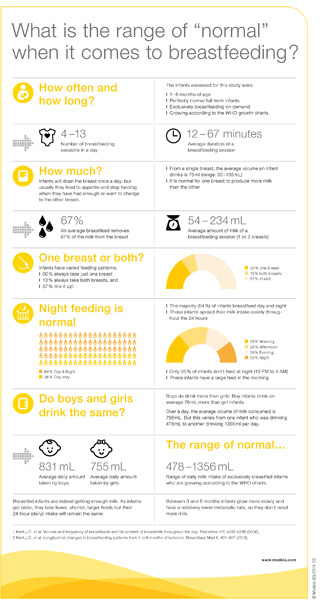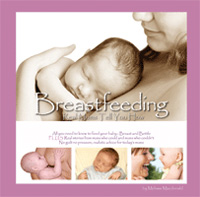New Research Redefines What is "Normal" in Breastfeeding

New Research Redefines What is "Normal" in Breastfeeding
When I breastfeed, how do I know I am doing it right? Is my baby getting enough milk? How often do I need to feed my baby? Why does my friend's baby not feed as frequently? These are the types of questions regularly asked by mothers at some stage during their breastfeeding experience. Now, thanks to new studies from leading lactation researcher Jacqueline Kent the boundaries for -normal' breastfeeding have been redefined and these common queries answered.
 Kent's recent analysis and explorations were presented for the first time at Medela's 9th International Breastfeeding and Lactation Symposium in April. Her findings confirm that in fact there is no breastfeeding norm, no specific pattern that infants will, or need to adopt and certainly no set of rules that benchmark the right way to breastfeed. The new research explains that every breastfeeding relationship between mother and baby is unique and that it will adapt and change throughout the breastfeeding period. The differences may appear extreme, but are natural and not necessarily an indication of insufficient milk supply or other problems.
Kent's recent analysis and explorations were presented for the first time at Medela's 9th International Breastfeeding and Lactation Symposium in April. Her findings confirm that in fact there is no breastfeeding norm, no specific pattern that infants will, or need to adopt and certainly no set of rules that benchmark the right way to breastfeed. The new research explains that every breastfeeding relationship between mother and baby is unique and that it will adapt and change throughout the breastfeeding period. The differences may appear extreme, but are natural and not necessarily an indication of insufficient milk supply or other problems.
Kent's conclusions will dramatically alter the way health professionals guide mothers in future and will provide a revised understanding for breastfeeding families. Better knowledge of the variability and expected changes in breastfeeding patterns will improve mothers' confidence about their milk supply. Results show that:
Breastfed infants control their milk intake to match their appetite and growth rate, taking what they need
Exclusively breastfed infants normally show a wide variety of breastfeeding patterns
Between one and six months of lactation, breastfed infants take fewer, faster, larger feeds, but their total daily milk intake is constant. Kent's findings have highlighted the changes in breastfeeding patterns during a baby's individual journey, sometimes changing monthly. But they also demonstrate that between infants, there is a wide variety of breastfeeding patterns and that they do not need to conform to an average.
The significant variability in frequency and volume intake of the healthy, exclusively breastfed infant aged 1 to 6 months is as follows:
4-13 – the number of breastfeeding sessions per day
12-67 minutes – the duration of a breastfeeding session
54-234 ml – volume of milk consumed in a breastfeeding session
478-1356 ml – the volume of milk consumed in a 24 hour period
This knowledge will undoubtedly provide much-needed evidence to give health professionals confidence in various feeding situations and to give mothers self-assurance in their role. The breastfeeding community must take from this study the understanding that changes in an infant's breastfeeding behaviours are completely normal, as are differences between babies. They are not an indication of insufficient milk supply. Lack of milk is often cited as one of the reasons mothers give up breastfeeding; the concern that their baby is not getting milk is naturally a worry. Mothers may think that because their baby is feeding more often it is a sign they are not getting enough each feed, but thanks to Kent we have learnt that this is not necessarily the case.
Using Kent's new work to further educate both mothers and health professionals on the expected breastfeeding journey can potentially irradiate breastfeeding myths, thus making it a truly ground-breaking study in the field of lactation.
Have You Seen This?
MORE












